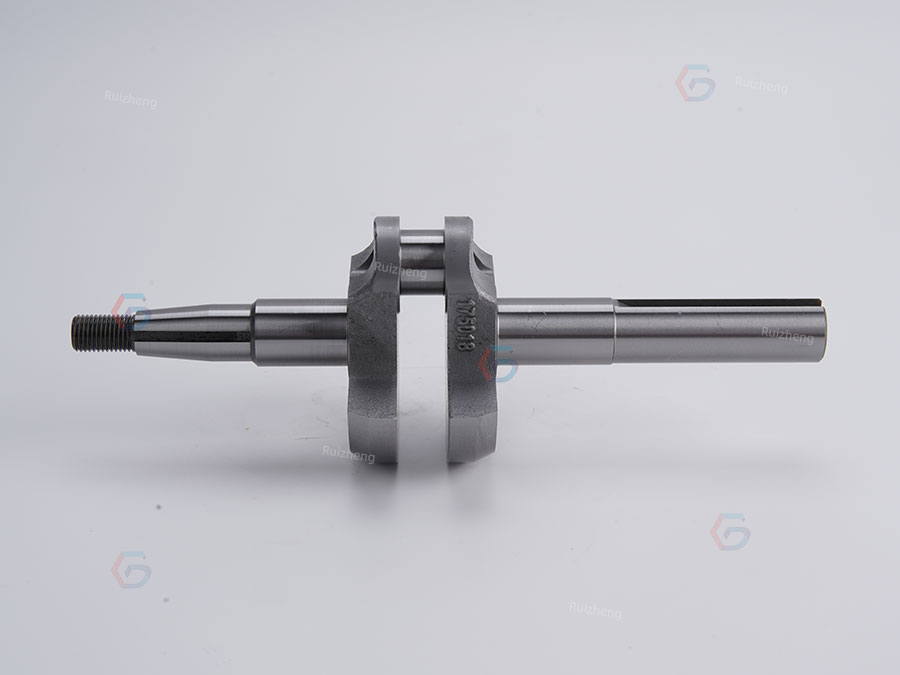
After we Foshan Ruizheng shared “6 Features and Components of Crankshaft Parts” before, many netizens felt that they had gained a lot, so they hoped that we would continue to share an issue about the basic applications and uses of crankshaft parts. The next content will continue to share “Crankshaft Parts: Essential Applications and Uses Across Machinery”, I hope it will be helpful to everyone.
From automobiles to industrial engines, crankshaft parts are indispensable components in countless machines. Understanding where these parts are used and their critical roles can help industries optimize performance and maintenance. In this article, we’ll explore the types of machinery that rely on crankshaft parts and delve into their primary purposes.
Which Machines Require Crankshaft Parts?
Crankshaft parts are foundational to any equipment that converts reciprocating motion into rotational force. Here are the key machines and systems that depend on them:
Internal Combustion Engines
Automotive Engines: Cars, trucks, motorcycles, and buses all use crankshaft parts to transfer power from pistons to the transmission.
Marine Engines: Boats and ships rely on heavy-duty crankshaft assemblies to handle high torque and saltwater environments.
Aircraft Engines: Smaller piston-driven aircraft engines use precision crankshaft parts to ensure reliability at high altitudes.
Industrial Machinery
Generators: Diesel or gas-powered generators depend on crankshaft parts to drive electrical generation.
Pumps and Compressors: These machines use crankshafts to convert motor power into fluid or air pressure.
Construction Equipment: Excavators, bulldozers, and cranes utilize robust crankshaft parts to withstand heavy loads and vibrations.
Agricultural and Heavy-Duty Equipment
Tractors and Harvesters: Farming machinery requires durable crankshaft parts to operate in dusty, high-stress conditions.
Locomotives: Train engines use massive crankshaft assemblies to power long-distance transportation.
Specialized Applications
Racing Engines: High-performance crankshaft parts are lightweight and reinforced to handle extreme RPMs.
Vintage Machinery: Restoration projects often source custom crankshaft parts to replicate original designs.
The Primary Uses of Crankshaft Parts
Crankshaft parts serve two overarching purposes across machinery: motion conversion and power transmission. Let’s break down their roles:
Convert Linear Motion to Rotational Force
The core function of crankshaft parts is to transform the up-and-down motion of pistons (linear) into the rotational motion needed to drive wheels, propellers, or gears. This conversion is achieved through the crankshaft’s offset rod journals, which pivot as the pistons fire.
Transfer Energy Efficiently
Power Delivery: Crankshaft parts act as the bridge between the engine’s combustion force and the drivetrain. They ensure energy generated by fuel combustion is smoothly transferred to the transmission or generator.
Balancing Forces: Counterweights on the crankshaft offset the inertia of moving pistons and rods, reducing vibrations that could damage the engine.
Support Engine Longevity
Durability: High-quality crankshaft parts are built to endure repetitive stress, heat, and friction, extending the lifespan of engines.
Lubrication Management: Integrated oil passages in the crankshaft distribute lubricant to bearings and journals, preventing wear and overheating.
Enable Customization for Performance
In high-stakes applications like racing or aviation, crankshaft parts are tailored to meet specific needs:
Stroke Length: Adjusting the distance between rod journals alters engine displacement and torque.
Weight Reduction: Lightweight crankshafts improve acceleration and fuel efficiency.
Material Upgrades: Forged steel or billet crankshafts handle higher horsepower and RPM limits.
Why Crankshaft Parts Are Non-Negotiable in Machinery
Without properly functioning crankshaft parts, engines and machines would fail to generate usable power. Their design ensures seamless energy conversion, minimizes mechanical stress, and adapts to diverse operational demands—from everyday commuting to industrial-scale projects. Regular inspection and maintenance of crankshaft parts (e.g., checking for cracks, wear, or misalignment) are crucial to avoiding costly breakdowns.


